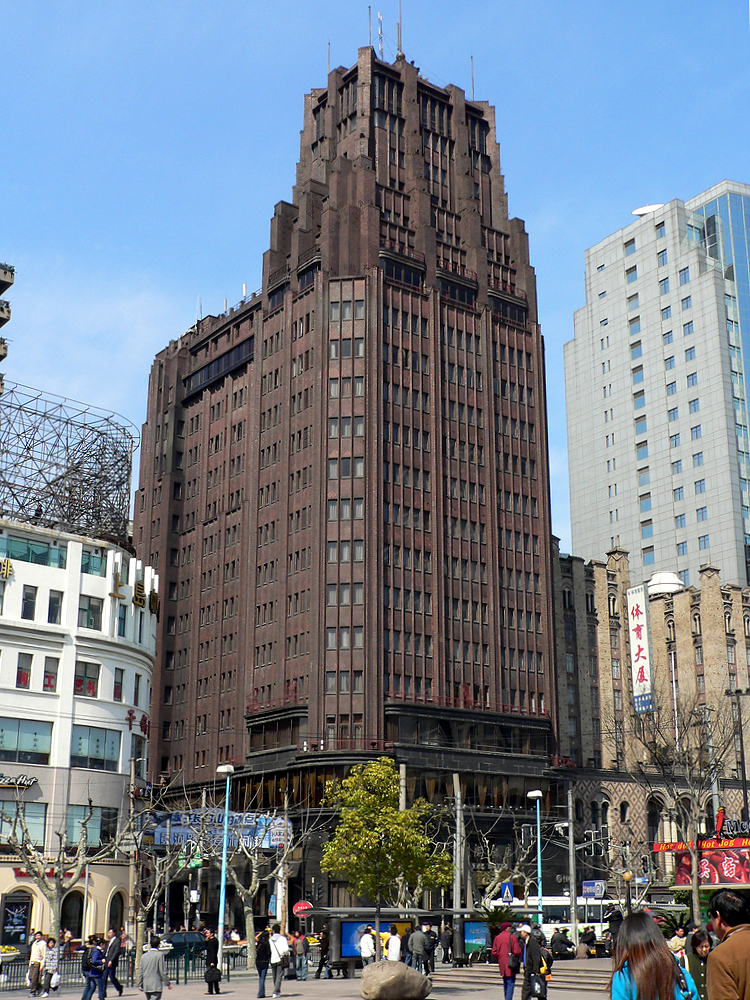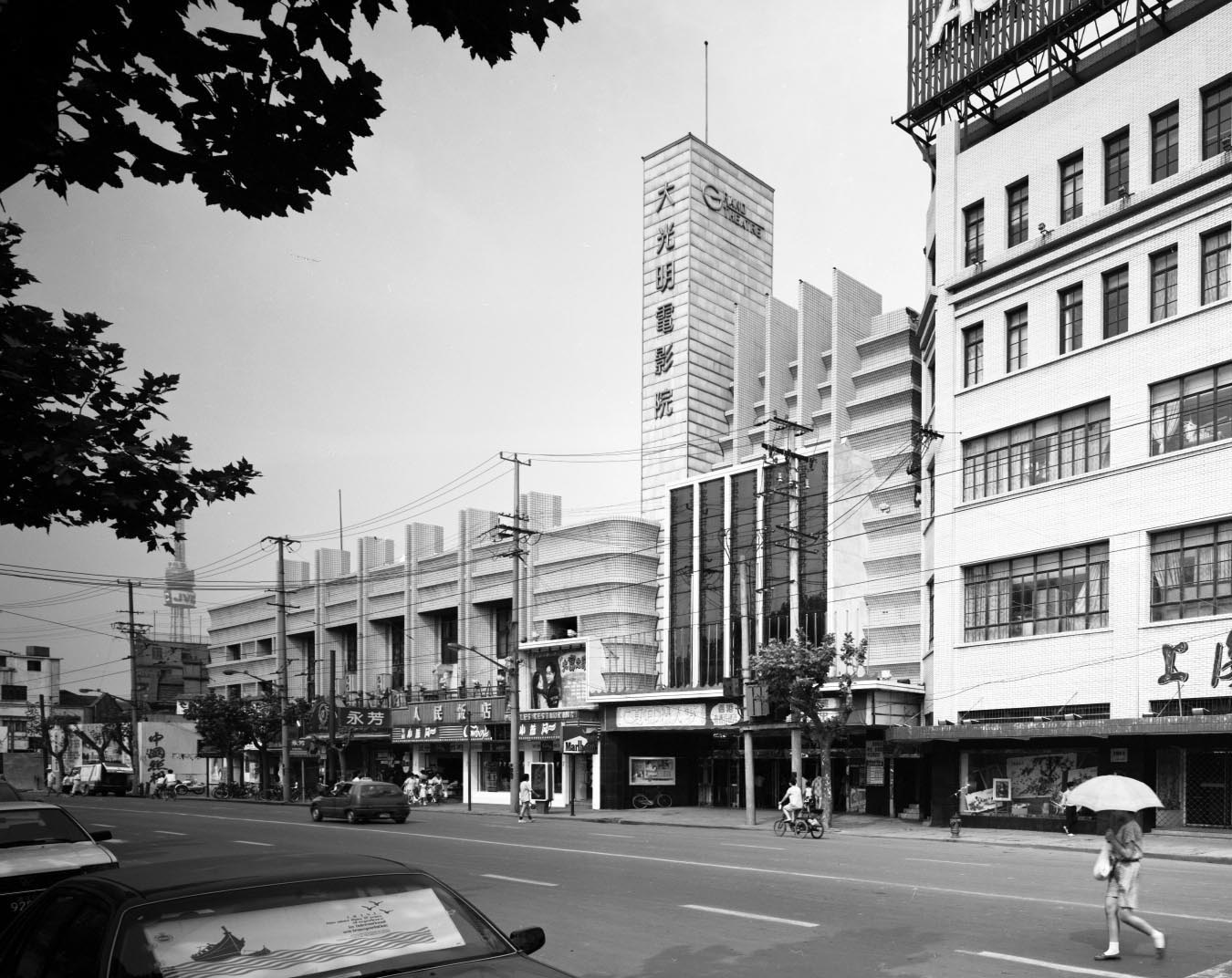László Hudec on:
[Wikipedia]
[Google]
[Amazon]
László Ede Hudec or Ladislav Hudec () (Besztercebánya,
 * American Club, Shanghai
* Country Hospital
* Paulun Hospital ()
* Margaret Williamson Hospital (Red House Hospital)
* Moore Memorial Church ()
* German Church ()
* Chapei Power Station ()
* China Baptist Publication Society and Christian Literature Society Building ()
* Union Brewery
* Grand Theatre
* Park Hotel Shanghai
* Dr Woo's villa (Green house) ()
* Avenue Apartments
* Wukang Mansion (Normandie Apartments)
* Hudec House ()
* Columbia Circle ()
* Columbia Country Club ()
* American Club, Shanghai
* Country Hospital
* Paulun Hospital ()
* Margaret Williamson Hospital (Red House Hospital)
* Moore Memorial Church ()
* German Church ()
* Chapei Power Station ()
* China Baptist Publication Society and Christian Literature Society Building ()
* Union Brewery
* Grand Theatre
* Park Hotel Shanghai
* Dr Woo's villa (Green house) ()
* Avenue Apartments
* Wukang Mansion (Normandie Apartments)
* Hudec House ()
* Columbia Circle ()
* Columbia Country Club ()

Hudec Heritage Project
Collection of high-resolution photographs of historic buildings in Shanghai
Laszlo Hudec fonds
at University of Victoria, Special Collections
Interactive 3D models of László Hudec's buildings
created with Virtual Building Explorer.
Official site of the year of Hudec in Shanghai
{{DEFAULTSORT:Hudec, Laszlo 1893 births 1958 deaths Architects from Austria-Hungary People from Banská Bystrica Hungarian architects Slovak architects Austro-Hungarian military personnel of World War I Hungarian emigrants to the United States University of California, Berkeley College of Letters and Science faculty Hungarian expatriates in China Hungarian people of Slovak descent
Austria-Hungary
Austria-Hungary, also referred to as the Austro-Hungarian Empire, the Dual Monarchy or the Habsburg Monarchy, was a multi-national constitutional monarchy in Central Europe#Before World War I, Central Europe between 1867 and 1918. A military ...
(now Banská Bystrica
Banská Bystrica (, also known by other #Etymology, alternative names) is a city in central Slovakia, located on the Hron River in a long and wide valley encircled by the mountain chains of the Low Tatras, the Greater Fatra, Veľká Fatra, and t ...
, Slovakia
Slovakia, officially the Slovak Republic, is a landlocked country in Central Europe. It is bordered by Poland to the north, Ukraine to the east, Hungary to the south, Austria to the west, and the Czech Republic to the northwest. Slovakia's m ...
) January 8, 1893 – Berkeley, October 26, 1958), Chinese name Wu Dake (), was a Hungarian– Slovak architect active in Shanghai
Shanghai, Shanghainese: , Standard Chinese pronunciation: is a direct-administered municipality and the most populous urban area in China. The city is located on the Chinese shoreline on the southern estuary of the Yangtze River, with the ...
from 1918 to 1945 and responsible for some of that city's most notable structures. Major works include the Park Hotel, the Grand Theatre, the Joint Savings and Loan building, the combined Baptist Publications and Christian Literature Society buildings, and the post-modern "Green House". Hudec's style evolved during his active period, from the eclectic neo-classicism popular in the early 20th century to art deco and modern buildings toward the later part of his career. Although some of his buildings have been lost in the intervening decades, many survive.
Biography
Hudec was born in 1893 in Besztercebánya,Austria-Hungary
Austria-Hungary, also referred to as the Austro-Hungarian Empire, the Dual Monarchy or the Habsburg Monarchy, was a multi-national constitutional monarchy in Central Europe#Before World War I, Central Europe between 1867 and 1918. A military ...
(now Banská Bystrica
Banská Bystrica (, also known by other #Etymology, alternative names) is a city in central Slovakia, located on the Hron River in a long and wide valley encircled by the mountain chains of the Low Tatras, the Greater Fatra, Veľká Fatra, and t ...
in Slovakia
Slovakia, officially the Slovak Republic, is a landlocked country in Central Europe. It is bordered by Poland to the north, Ukraine to the east, Hungary to the south, Austria to the west, and the Czech Republic to the northwest. Slovakia's m ...
). His father, György Hugyecz was a wealthy MagyarizedOriginally Juraj Hudec, he changed his Slovak name "Hudec" to the Hungarian form "Hugyecz" in 1890. () Slovak architect, born in the nearby village of Felsőmicsinye (now Horná Mičiná), while his mother, Paula Skultéty was an ethnic Hungarian from Kassa (now Košice
Košice is the largest city in eastern Slovakia. It is situated on the river Hornád at the eastern reaches of the Slovak Ore Mountains, near the border with Hungary. With a population of approximately 230,000, Košice is the second-largest cit ...
). He studied architecture at Budapest University from 1911 to 1914.Warr, Anne: ''Shanghai Architecture'', The Watermark Press, 2007, As a patriot, Hudec volunteered to join the Austro-Hungarian Army
The Austro-Hungarian Army, also known as the Imperial and Royal Army,; was the principal ground force of Austria-Hungary from 1867 to 1918. It consisted of three organisations: the Common Army (, recruited from all parts of Austria-Hungary), ...
after outbreak of World War I
World War I or the First World War (28 July 1914 – 11 November 1918), also known as the Great War, was a World war, global conflict between two coalitions: the Allies of World War I, Allies (or Entente) and the Central Powers. Fighting to ...
, but was captured by the Russian Army in 1916 and was sent to a prison camp in Siberia. While being transferred, he jumped from a train near the Chinese border and made his way to Shanghai, where he joined the American architectural office R. A. Curry.
In 1925, he opened his own practice, and was responsible for at least 37 buildings up to 1941.
After the Munich Agreement
The Munich Agreement was reached in Munich on 30 September 1938, by Nazi Germany, the United Kingdom, the French Third Republic, French Republic, and the Kingdom of Italy. The agreement provided for the Occupation of Czechoslovakia (1938–194 ...
, (1938) Hudec lost his Czechoslovak citizenship and applied to become Hungarian citizen. In 1941 he obtained a Hungarian passport and was appointed Honorary Consul
A consul is an official representative of a government who resides in a foreign country to assist and protect citizens of the consul's country, and to promote and facilitate commercial and diplomatic relations between the two countries.
A consu ...
of Hungary in Shanghai.
Hudec's masterpiece is usually considered to be the 22-story Park Hotel Shanghai, on Nanjing Road across from People's Square
People's, branded as ''People's ViennaLine'' until May 2018, and legally ''Altenrhein Luftfahrt GmbH'', is an Austro- Swiss airline headquartered in Vienna, Austria. It operates scheduled and charter passenger flights mainly from its base at ...
. Built in 1934, it was the tallest building in the city until the 1980s, and is still a local landmark.
After leaving Shanghai in 1947, Hudec moved to Lugano
Lugano ( , , ; ) is a city and municipality within the Lugano District in the canton of Ticino, Switzerland. It is the largest city in both Ticino and the Italian-speaking region of southern Switzerland. Lugano has a population () of , and an u ...
and later to Rome
Rome (Italian language, Italian and , ) is the capital city and most populated (municipality) of Italy. It is also the administrative centre of the Lazio Regions of Italy, region and of the Metropolitan City of Rome. A special named with 2, ...
. In 1950 he moved to Berkeley where he taught at the University of California
The University of California (UC) is a public university, public Land-grant university, land-grant research university, research university system in the U.S. state of California. Headquartered in Oakland, California, Oakland, the system is co ...
. He died from a heart-attack during an earthquake in 1958. In 1970 his remains were buried in an evangelical cemetery in Banská Bystrica.
Buildings in Shanghai
 * American Club, Shanghai
* Country Hospital
* Paulun Hospital ()
* Margaret Williamson Hospital (Red House Hospital)
* Moore Memorial Church ()
* German Church ()
* Chapei Power Station ()
* China Baptist Publication Society and Christian Literature Society Building ()
* Union Brewery
* Grand Theatre
* Park Hotel Shanghai
* Dr Woo's villa (Green house) ()
* Avenue Apartments
* Wukang Mansion (Normandie Apartments)
* Hudec House ()
* Columbia Circle ()
* Columbia Country Club ()
* American Club, Shanghai
* Country Hospital
* Paulun Hospital ()
* Margaret Williamson Hospital (Red House Hospital)
* Moore Memorial Church ()
* German Church ()
* Chapei Power Station ()
* China Baptist Publication Society and Christian Literature Society Building ()
* Union Brewery
* Grand Theatre
* Park Hotel Shanghai
* Dr Woo's villa (Green house) ()
* Avenue Apartments
* Wukang Mansion (Normandie Apartments)
* Hudec House ()
* Columbia Circle ()
* Columbia Country Club ()

Buildings in Slovakia
* SPA chapel of theQueen of Heaven
Queen of Heaven () is a title given by the Catholic Church and Eastern Orthodoxy, to Mary, mother of Jesus, and, to a lesser extent, in Anglicanism and Lutheranism. The title has long been a tradition, included in prayers and devotional literat ...
in Vyhne
References
Notes
External links
Hudec Heritage Project
Collection of high-resolution photographs of historic buildings in Shanghai
Laszlo Hudec fonds
at University of Victoria, Special Collections
Interactive 3D models of László Hudec's buildings
created with Virtual Building Explorer.
Official site of the year of Hudec in Shanghai
{{DEFAULTSORT:Hudec, Laszlo 1893 births 1958 deaths Architects from Austria-Hungary People from Banská Bystrica Hungarian architects Slovak architects Austro-Hungarian military personnel of World War I Hungarian emigrants to the United States University of California, Berkeley College of Letters and Science faculty Hungarian expatriates in China Hungarian people of Slovak descent